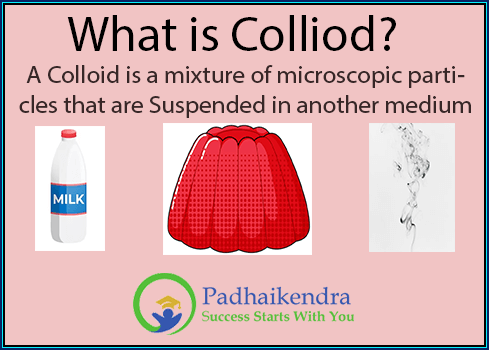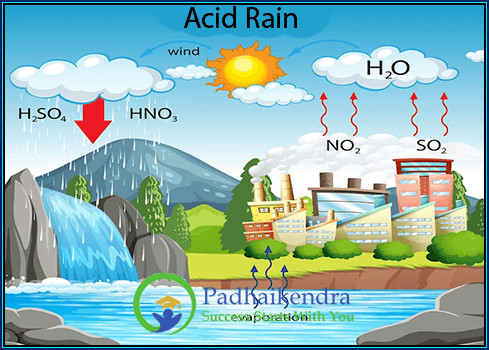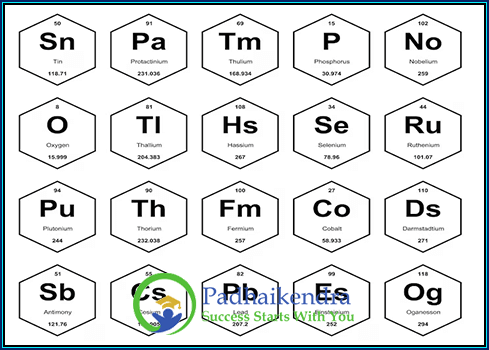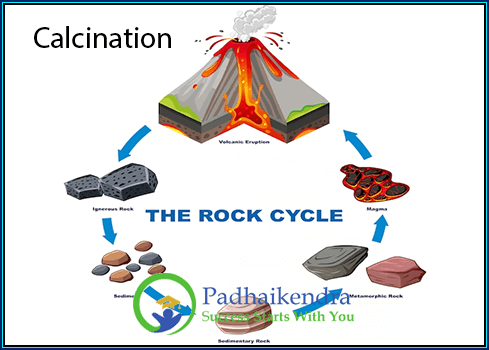What are Colloids?
Colloids are mixtures of two or more substances in which one substance is dispersed (suspended) as fine particles throughout another substance. The dispersed substance is called the dispersed phase, and the substance in which it is dispersed is called the dispersion medium. The particles in a colloid are typically between 1 and 1000 nanometers in diameter, which is too small to be seen with the naked eye but large enough to scatter light. This is why colloids often appear cloudy or translucent.
Preparation of Colloids
There are two main methods for preparing colloids:
- Dispersion Method
- Condensation methods
Dispersion Methods
Dispersion methods involve breaking down larger particles into smaller ones. This can be done by mechanical means, such as grinding or stirring, or by using an electric field, such as in an ultrasonic homogenizer.
EXAMPLE OF DISPERSION METHOD
- Mechanical grinding: This method is used to break down larger particles into smaller ones. It can be done using a mortar and pestle, a ball mill, or an ultrasonic homogenizer.
- High-pressure homogenization: This method uses high pressure to break down particles into smaller ones. It is a more efficient way to disperse particles than mechanical grinding.
- Bredig’s arc method: This method uses an electric arc to create a dispersion of metal particles in water.
- Peptization: This method uses an electrolyte to stabilize a freshly precipitated sol.
Condensation Methods
Condensation methods involve forming the dispersed phase from smaller molecules or ions. This can be done by chemical reactions, such as the reaction of two gases to form a solid precipitate, or by physical processes, such as the condensation of a vapor.
EXAMPLE OF CONDENSATION METHOD
- Chemical precipitation: This method is used to form a precipitate of a desired substance. The precipitate can then be dispersed in a liquid to form a colloid.
- Excessive cooling: This method is used to form a colloid of a gas in a liquid. The gas is dissolved in the liquid and then the liquid is cooled. As the liquid cools, the gas comes out of the solution and forms a colloid.
- Thermally-induced phase separation: This method is used to form a colloid of two liquids. The liquids are mixed together and then heated. As the liquids are heated, they will separate into two phases. The dispersed phase will be the liquid that has a lower boiling point.
Purification of Colloids
- Filtration can be used to remove large particles from a colloid.
- Centrifugation can be used to separate particles of different densities.
- Dialysis can be used to remove small molecules from a colloid.
- Precipitation can be used to remove a specific type of particle from a colloid.
Classification of Colloids
Colloids can be classified into four types based on the nature of the dispersed phase and the dispersion medium:
Suspensions
Suspensions are colloids in which the dispersed phase is solid and the dispersion medium is a liquid.
Emulsions
Emulsions are colloids in which the dispersed phase is a liquid and the dispersion medium is another liquid.
Foams
Foams are colloids in which the dispersed phase is a gas and the dispersion medium is a liquid.
Sols
Sols are colloids in which the dispersed phase is a solid and the dispersion medium is a solid.
Application/Uses of Colloids
Common uses of colloids
- Food and beverage industry: Colloids are used in a variety of food and beverage products, such as milk, cheese, ice cream, and paint. They are used to improve the texture, taste, and appearance of these products.
- Cosmetics industry: Colloids are used in a variety of cosmetics products, such as sunscreen, lotion, and makeup. They are used to improve the consistency, spreadability, and color of these products.
- Pharmaceutical industry: Colloids are used in a variety of pharmaceutical products, such as vaccines, eye drops, and creams. They are used to improve the delivery of drugs to the body.
- Industrial applications: Colloids are used in a variety of industrial applications, such as in paints, plastics, and adhesives. They are used to improve the properties of these materials, such as their strength, durability, and water resistance.
Properties of Colloids
Colloids have several properties that distinguish them from other types of mixtures.
- Tyndall effect: Colloids scatter light, which is why they often appear cloudy or translucent.
- Brownian motion: The particles in a colloid are constantly moving in a random motion, which is caused by the bombardment of the particles by the molecules of the dispersion medium.
- Ostwald ripening: Over time, the particles in a colloid will tend to grow larger, which can lead to the formation of a precipitate.
Colloids are a diverse and important class of materials that have many uses in a variety of fields. Their unique properties make them well-suited for a variety of applications, and they continue to be an area of active research.





